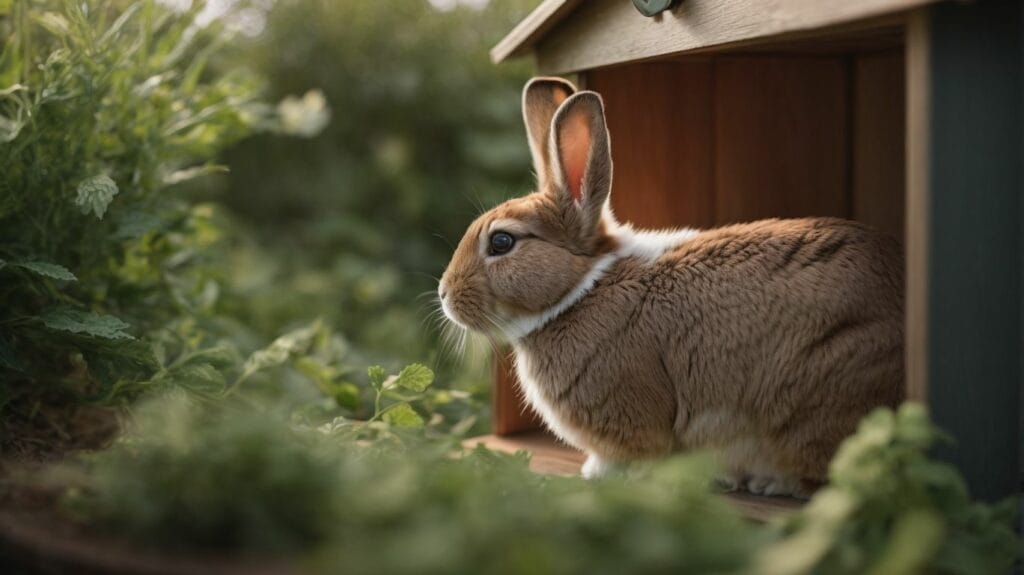Table of Contents
Add a header to begin generating the table of contents
Pet rabbits are often considered indoor pets, but can they live outside? This question has been a topic of debate among rabbit owners. While some rabbits thrive in outdoor environments, there are several factors to consider before making the decision to keep a rabbit outside.
Factors such as climate and temperature, predators and safety, shelter and protection, and socialization and stimulation all play a crucial role in determining whether outdoor living is suitable for a pet rabbit.
However, there are also several benefits to outdoor living for rabbits. These include exposure to a natural environment, opportunities for exercise and physical activity, fresh air and sunlight, and the ability to forage and engage in natural behaviors.
Despite these benefits, outdoor living for rabbits does come with potential risks and challenges. Extreme weather conditions, exposure to predators, limited human interaction, and the need for proper accessibility and monitoring are all important considerations.
For those considering housing a rabbit outside, there are tips and guidelines to ensure their well-being and safety. alternatives to outdoor living, such as supervised outdoor playtime or creating an indoor-outdoor setup, can be considered.
Ultimately, the decision to keep a pet rabbit outside should be made with careful consideration of the individual rabbit’s needs and circumstances, and with proper planning and safeguards in place.






Key Takeaways:
- Rabbits can live outside under certain conditions: Factors such as climate, predators, shelter, and socialization must be considered before keeping a rabbit outdoors.
- Outdoor living offers benefits for pet rabbits: It provides a natural environment, exercise and physical activity, fresh air and sunlight, as well as foraging and enrichment opportunities.
- Potential risks and challenges: Extreme weather conditions, exposure to predators, limited human interaction, and the need for accessibility and monitoring are important factors to be aware of when keeping rabbits outside.
Can Pet Rabbits Live Outside?
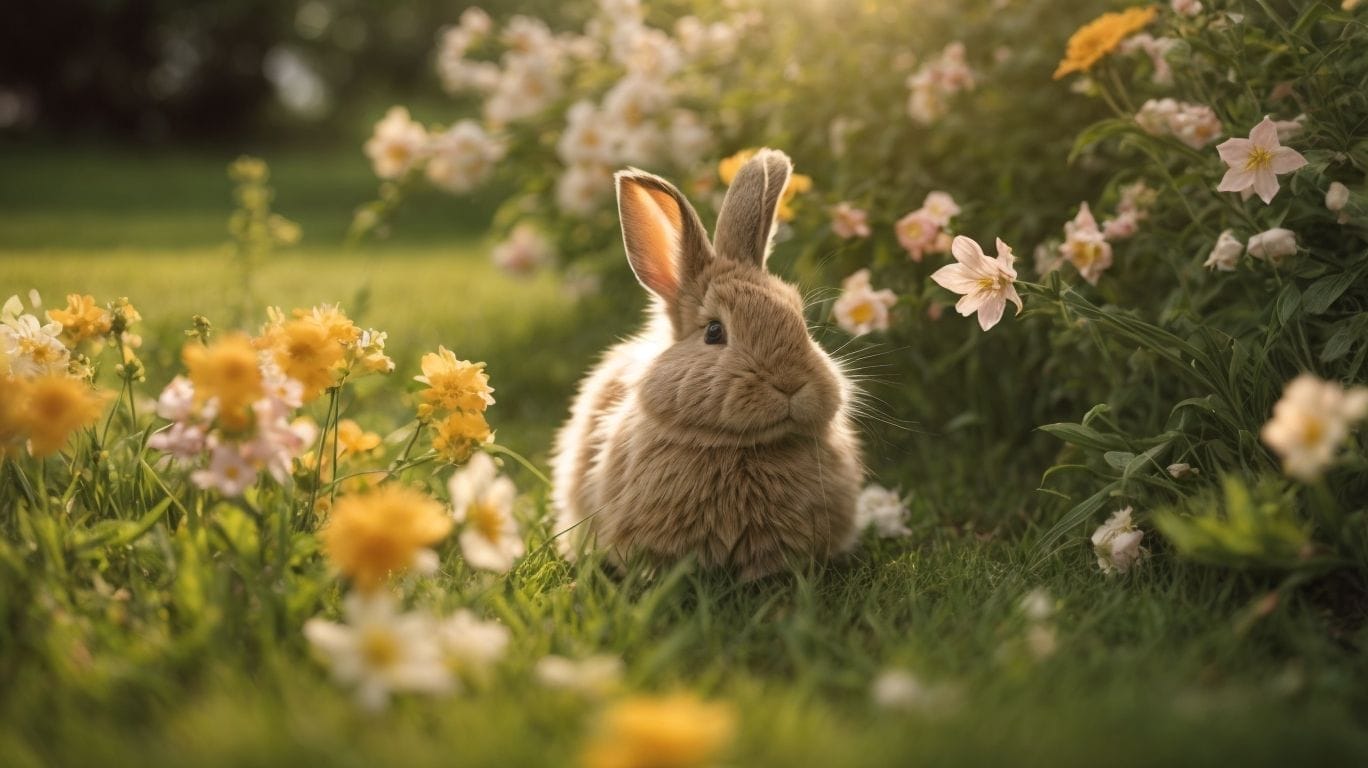
Photo Credits: Petnarnia.Com by Philip Wright
Can Pet Rabbits Live Outside? Pet rabbits can live outside, but it is important to consider certain factors. Rabbits are sensitive to extreme temperatures, so proper shelter and insulation are crucial. They also need protection from predators, so a secure hutch or enclosure is necessary. Regular monitoring and interaction with the rabbits is essential to ensure their well-being. Providing a balanced diet, fresh water, and mental stimulation will contribute to their overall health. It is recommended to research and consult with a veterinarian to determine if outdoor living is suitable for your pet rabbit.Factors to Consider Before Keeping a Rabbit Outside
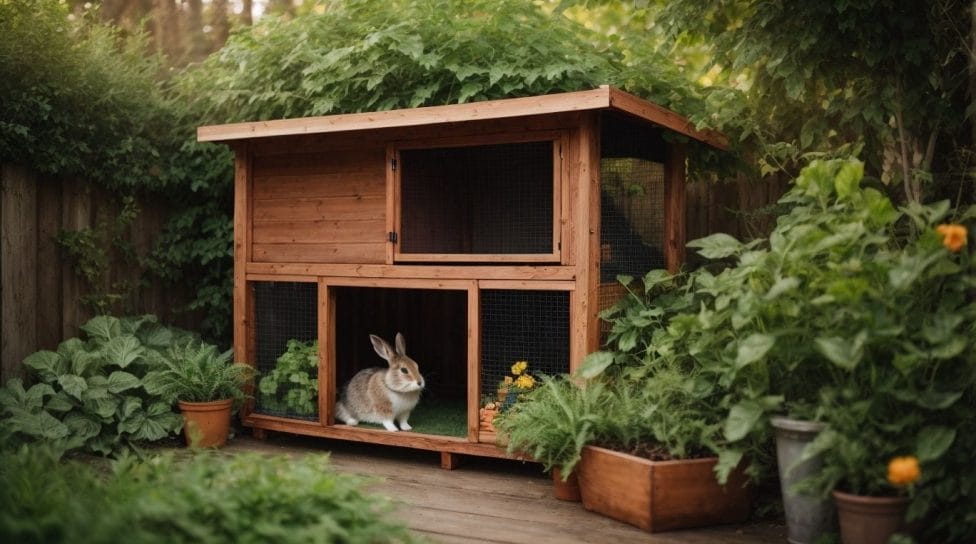
Photo Credits: Petnarnia.Com by Paul Lopez
Thinking of keeping a rabbit outside? Let’s explore the crucial factors to consider before making this decision. From climate and temperature to the safety from predators, shelter, and socialization needs, we’ll cover it all. Get ready to discover what it takes to provide a secure and stimulating environment for your furry friend. So, before you give your rabbit a taste of the great outdoors, let’s dive into these important considerations.Climate and Temperature
When considering keeping a rabbit outside, the climate and temperature are vital factors to take into account for their well-being. Rabbits are highly sensitive to extreme temperatures and can be at risk of suffering from heatstroke or hypothermia. It is absolutely crucial to ensure that the rabbit‘s outdoor living space provides ample shade and protection from harsh weather conditions. In regions with hotter climates, implementing cooling methods such as frozen water bottles or misting can effectively regulate their body temperature. Similarly, in colder climates, it is important to provide proper insulation, heated shelters, and extra bedding to keep them warm and cozy. Regularly monitoring weather forecasts and adjusting their living conditions accordingly is absolutely necessary in order to prioritize the rabbit‘s comfort and overall safety. A true example from 2018 demonstrates the significance of this matter. Snowball, a beloved pet rabbit, was happily living outdoors in a location with a moderate climate. However, an unexpected heatwave caused the temperature to rise dramatically to 100°F, putting Snowball‘s life in grave danger. Thanks to the vigilant and caring owner, Snowball was immediately relocated to a cool and shaded area with easy access to fresh water. This quick and decisive action ultimately saved Snowball from enduring potentially fatal heatstroke. This incident serves as a stark reminder of the utmost importance of continuously monitoring the ever-changing climate and temperature when choosing to house rabbits outside.Predators and Safety
Rabbits are vulnerable to a range of predators when living outdoors, so it is of utmost importance to prioritize their safety. Before choosing to house them outside, it is crucial to consider the potential threats they may face. Some common predators that pose a risk to rabbits include foxes, raccoons, stray dogs, and birds of prey. To protect them, it is necessary to provide secure shelter, such as a predator-proof hutch or enclosure. This entails using sturdy materials, reinforced doors, and wire mesh fencing. Regularly inspecting the environment for any potential breaches and ensuring supervision during outdoor time are important safety measures. By taking these precautions and prioritizing the safety of pet rabbits, they can still enjoy the benefits of outdoor living while minimizing the risks presented by predators. Let me tell you a story about a pet rabbit named Charlie who used to live in a cozy hutch in his owner’s backyard. One fateful day, a crafty fox attempted to break into the yard, clearly eyeing Charlie as its next meal. Fortunately, Charlie‘s vigilant owner had installed a durable wire mesh fence and a hutch that was designed to keep predators out. The fox‘s efforts were in vain, and Charlie remained safely within his sanctuary. This incident serves as a reminder to always prioritize the safety of outdoor-living rabbits by diligently fortifying their environment against potential predators. Thank you!Shelter and Protection
Providing adequate shelter and protection is essential when considering whether to keep a rabbit outside. Rabbits are highly susceptible to predators, including raccoons, foxes, and birds of prey. Consequently, it is imperative to have a sturdy and secure hutch or cage that can effectively safeguard them. The hutch must feature a robust roof to shield your pet from rain and direct sunlight, as well as a solid floor to prevent any attempts at digging. To ensure proper airflow, it is crucial that the hutch is well-ventilated. Consistently inspecting and maintaining the hutch will guarantee that it remains a safe and secure shelter for your rabbit. Here are some recommendations for providing shelter and protection:| – Opt for a hutch constructed of durable materials like metal or solid wood to enhance security. |
| – Create a separate enclosed area or run where your rabbit can exercise outdoors while still being protected from predators. |
| – Elevate the hutch above ground level to deter burrowing animals from gaining access. |
| – Select a calm location for the hutch, away from any disturbances or excessive noise, to provide a peaceful environment conducive to your rabbit’s well-being. |
Socialization and Stimulation
Socialization and stimulation are essential elements to consider when keeping a rabbit outdoors. Interaction plays a vital role in this regard, so make sure to provide your rabbit with daily playtime and companionship to prevent loneliness and promote a strong bond. Moreover, offering a variety of toys like puzzle feeders, tunnels, and chew toys can keep your rabbit mentally stimulated. It is also essential to create a safe and spacious enclosure for your rabbit to explore and exercise. To enhance environmental enrichment, introduce natural elements such as grass, digging boxes, and hiding spots to mimic a rabbit’s natural habitat.Benefits of Outdoor Living for Pet Rabbits
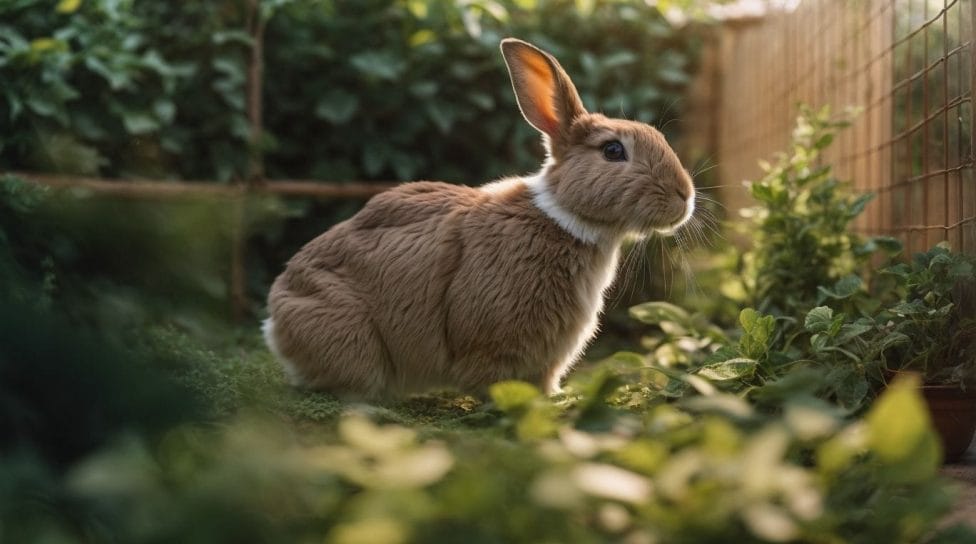
Photo Credits: Petnarnia.Com by Bobby Clark
When it comes to outdoor living for pet rabbits, the benefits are truly worth exploring. From providing a natural environment and ample space for exercise, to fresh air, sunlight, and opportunities for foraging and enrichment, there’s so much to discover. So, if you’re wondering whether your furry friend can thrive outdoors, keep reading to uncover the incredible advantages that await them in the great outdoors. Get ready to see your pet rabbit hop, play, and truly flourish in their natural habitat!Natural Environment
Allowing pet rabbits to live in a natural environment outdoors can have numerous advantages for their overall well-being.- Connects with their instincts: Being outside enables rabbits to engage in their natural behaviors such as digging, foraging, and exploring, which are crucial for their mental and physical stimulation.
- Opportunity for exercise: The spacious outdoor area encourages rabbits to move around and get exercise, promoting a healthier lifestyle and reducing the risk of obesity.
- Fresh air and sunlight: Living outdoors exposes rabbits to fresh air and natural sunlight, which can enhance their respiratory health and improve vitamin D production.
- Increased enrichment: The natural environment offers a variety of scents, textures, and sights for rabbits to explore and interact with, promoting mental stimulation and preventing boredom.
Exercise and Physical Activity
Outdoor living offers a multitude of opportunities for exercise and physical activity for pet rabbits, thereby promoting their overall health and well-being. There are several ways in which rabbits can reap the benefits of being outdoors:- Natural environment: Rabbits thrive in a more natural setting where they can freely explore, dig, and run, engaging in exercise and physical activity.
- Exercise and physical activity: The expansive outdoor environment provides ample space for rabbits to partake in activities like hopping, running, and jumping, consequently aiding in muscle development and cardiovascular health.
- Fresh air and sunlight: Outdoor living allows rabbits to breathe in fresh air and bask in natural sunlight, which is crucial for their production of vitamin D and overall vitality.
- Foraging and enrichment: Being outside exposes rabbits to diverse plants, grasses, and herbs, fostering mental stimulation and enabling them to engage in their innate foraging behaviors.
Fresh Air and Sunlight
Fresh air and sunlight are essential for pet rabbits living outdoors. These natural elements play a crucial role in providing several benefits, such as synthesizing vitamin D, improving respiratory health, and promoting mental stimulation. Sunlight also aids in regulating their internal clock, contributing to their overall well-being. Ensuring safe and suitable outdoor living conditions is of utmost importance for rabbits. It is necessary to provide proper shelter from extreme weather, protect them from predators, and regularly monitor their well-being to prevent potential risks. Creating a secure and enriched outdoor environment can greatly enhance the quality of a rabbit’s life. However, it is vital to carefully consider the advantages and challenges that come with outdoor living and tailor it to meet the individual needs of each rabbit. In my personal experience, I had a beloved pet rabbit named Daisy who thoroughly enjoyed spending time in our backyard. She would happily bask in the sunshine, nibble on fresh grass, and freely hop around. Witnessing her immense joy while soaking up the fresh air and sunlight reassured me that outdoor living was indeed the perfect choice for her.Foraging and Enrichment
Outdoor living for pet rabbits provides opportunities for foraging and enrichment, which are essential for their mental and physical well-being. Here are some ways in which rabbits can benefit from foraging and enrichment in an outdoor environment:- Foraging for food: Rabbits instinctively love to forage for fresh grass, herbs, and plants, which provides mental stimulation and a varied diet.
- Exploring new scents and textures: Outdoor environments offer a wide range of natural smells, textures, and surfaces for rabbits to explore and interact with.
- Chewing and digging: Rabbits have a natural need to chew and dig. Outdoor spaces allow them to engage in these behaviors in a safe and appropriate manner.
- Stimulating the senses: The sights, sounds, and smells of the outdoors provide rabbits with sensory stimulation, promoting their overall well-being.
- Social interaction: Outdoor areas may provide opportunities for rabbits to interact with other animals, enhancing their socialization skills.
Potential Risks and Challenges of Keeping Rabbits Outside
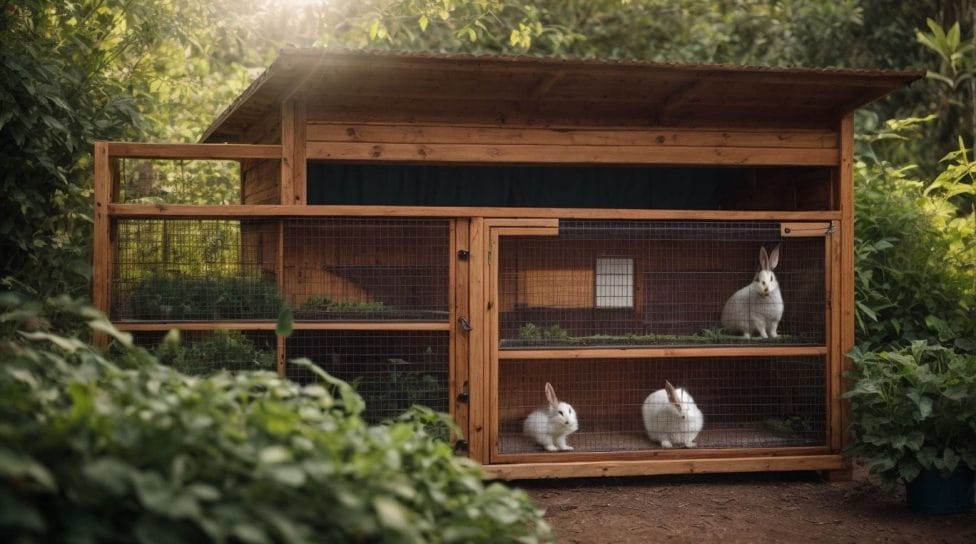
Photo Credits: Petnarnia.Com by Dennis Roberts
Keeping pet rabbits outside may seem like a natural choice, but it comes with potential risks and challenges. From extreme weather conditions to exposure to predators, limited human interaction, and the need for constant monitoring, there are several factors to consider. In this section, we will explore these aspects and shed light on the implications they may have for the well-being and safety of outdoor rabbits. So, before making the decision, let’s delve into the details and weigh the pros and cons of letting our furry friends roam the great outdoors.Extreme Weather Conditions
Extreme weather conditions can pose significant risks to rabbits living outside. Harsh cold temperatures can lead to hypothermia and frostbite, while scorching heat can cause heat stroke and dehydration. Protecting rabbits from extreme weather is crucial to their well-being. Providing insulated shelters with appropriate bedding and ventilation can help regulate temperature. Using shade structures and misters during hot weather can provide relief. Regular monitoring of weather forecasts and adjustments to housing conditions are essential to ensure the safety and comfort of rabbits living outdoors. It’s important to prioritize the health and safety of rabbits and consider alternatives, such as indoor housing, during extreme weather conditions.Exposure to Predators
Rabbits kept outside are at risk of exposure to predators, such as coyotes, foxes, and birds of prey. This can pose a threat to their safety and well-being. To address the issue of exposure to predators, it is crucial to provide outdoor rabbits with adequate shelter and protection. This includes ensuring secure fencing, predator-proof enclosures, and supervised playtime. By offering hiding places and elevated platforms, rabbits can feel a sense of security. Regularly monitoring the surroundings and implementing measures to deter predators are essential for keeping outdoor rabbits safe from potential harm.Limited Human Interaction
Limited human interaction is a potential drawback of keeping rabbits outside. Rabbits, being social animals that depend on companionship and interaction with their human caregivers, may miss out on the attention and affection that they would receive if housed indoors. This could result in boredom, loneliness, and even behavioral issues due to the lack of human interaction. To address this challenge, owners should actively make an effort to spend quality time with their outdoor rabbits on a regular basis. Providing affection, playtime, and mental stimulation becomes even more crucial. In addition, incorporating toys and hiding spots can help mitigate the effects of limited human interaction.Accessibility and Monitoring
“Accessibility and monitoring are crucial factors to consider when deciding to keep pet rabbits outside. The accessibility of their living area is of utmost importance. Rabbits require regular care and attention, making it necessary for their enclosure to be easily accessible for feeding, cleaning, and monitoring their health. A well-designed outdoor enclosure with secure openings and easy access points is essential for their overall welfare. Moreover, it is important to have a clear view of the enclosure, enabling better monitoring of the rabbits’ activities and well-being. Regular observation and interaction are vital, as they allow for prompt addressing of any potential issues or health concerns that may arise. By ensuring the accessibility and implementing a monitoring system, the safety and overall welfare of the rabbits can be effectively maintained.”Tips for Successfully Housing a Rabbit Outdoors

Photo Credits: Petnarnia.Com by Kevin Scott
Successfully housing a rabbit outdoors requires following these tips for successfully housing a rabbit outdoors:- Provide a secure and spacious hutch to protect the rabbit from predators.
- Ensure the hutch is well-ventilated, dry, and protected from extreme weather conditions.
- Offer a clean and comfortable bedding material, such as straw or hay.
- Regularly clean the hutch to maintain hygiene and prevent odors.
- Supply fresh water and a balanced diet of hay, vegetables, and pellets.
Alternatives to Outdoor Living for Rabbits

Photo Credits: Petnarnia.Com by Roger Perez
Providing alternatives to outdoor living for rabbits is crucial for their well-being and safety. These options are vital to ensure that they can thrive indoors while still having a stimulating environment.- Indoor enclosures: Creating spacious and secure enclosures with toys, tunnels, and hiding spots is important.
- Outdoor playpens: It is essential to set up safe and supervised outdoor playpens for rabbits to explore and enjoy fresh air.
- Harness training: Training rabbits to wear a harness and leash allows for supervised outdoor adventures.
- Enrichment activities: Regularly offering mental stimulation through puzzle toys, foraging games, and interactive play sessions is recommended.
- Indoor exercise: It is crucial to encourage daily exercise by providing ample space inside the home for hopping and jumping.
Some Facts About Keeping Pet Rabbits Outside:
- ✅ Rabbits can adapt to outdoor living with a good home and proper supervision. (Source: ExoticDirect)
- ✅ Pet rabbits have adaptations like thick fur coats and fur pads on their feet, allowing them to live outdoors in winter. (Source: ExoticDirect)
- ✅ Keeping rabbits outside exposes them to potential dangers such as predators and poisonous vegetation. (Source: ExoticDirect)
- ✅ Outdoor rabbits may feel lonely due to lack of social interaction unless provided with companionship. (Source: Hastings Vet)
- ✅ While raising rabbits indoors protects them from predators and extreme weather, it requires rabbit-proofing the home to prevent damage. (Source: Hastings Vet)
